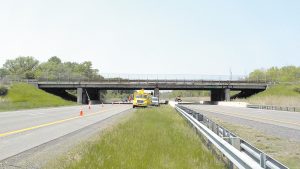After spending some time poring over Gov. Andrew Cuomo’s budget proposal, it leaves me with the same sense of disappointment, as it is filled with downstate-heavy spending, costly programs, and hidden tax increases. The governor has spent his early weeks of the year setting his gaze on higher office and touting a lofty progressive agenda, […]
Get Instant Access to This Article
Become a Central New York Business Journal subscriber and get immediate access to all of our subscriber-only content and much more.
- Critical Central New York business news and analysis updated daily.
- Immediate access to all subscriber-only content on our website.
- Get a year's worth of the Print Edition of The Central New York Business Journal.
- Special Feature Publications such as the Book of Lists and Revitalize Greater Binghamton, Mohawk Valley, and Syracuse Magazines
[bypass-paywall-buynow-link link_text="Click here to purchase a paywall bypass link for this article"].
After spending some time poring over Gov. Andrew Cuomo’s budget proposal, it leaves me with the same sense of disappointment, as it is filled with downstate-heavy spending, costly programs, and hidden tax increases. The governor has spent his early weeks of the year setting his gaze on higher office and touting a lofty progressive agenda, which will prove to be costly for average hardworking middle-class families of our state. Worse still is that the governor has been laying down a foundation of blame directed at the federal government and localities.
I think it’s fair to say that the governor’s focus has been on the presidency for some time. He’s set his sights on 2020 and is using New York as his sandbox to “prove” to far-left progressives that he’s their guy. This year, New York is facing a possible $4 billion budget deficit. To compensate for his past and continued policies that have contributed to this emergency, the governor has peppered throughout his budget proposal revenue boosters or taxes on New York’s hardworking families. These proposals include the discontinuation of the energy service sales-tax exemption, which would cost New Yorkers $96 million in the coming fiscal year and $128 million annually in subsequent years. He places a cap on the STAR Exemption benefit growth to zero, which would cost homeowners $49 million in 2018-19.
These moves don’t make a dent in this deficit. It’s clear that reductions in spending are needed. I am frustrated by the pressure the governor forces on our local governments to “consolidate” while he has done little to alleviate the unfunded mandates that are to blame for high costs of living in New York. Further still, using his insincere version of “ethics” reform would require same-day voter registration as well as early voting, which would amount to more costly mandates on our county governments.
Our upstate local communities need investment and attention from the state. The governor’s solution to revitalizing downtowns is the continuation of his Downtown Revitalization Program which pits 10 “winning” cities against each other to divide up a $100 million pot. The governor has gamified almost every aspect of government and investment, but I have serious reservations as to whether this is the best way to lift up and support our upstate communities. He further proposes to eliminate $1.8 million worth of village-per-capita aid, which helps small villages like those found in the Mohawk Valley and North Country. Elsewhere in his budget, Cuomo proposes to cut $11.5 million in agricultural aid, which supports rural districts like the one I represent.
The governor’s proposal provides $438.1 million to Consolidated Local Street and Highway Improvement Program (CHIPs) and $39.7 million to the Marchiselli Program to repair bridges, the rates from the previous year. His budget proposal offers another $100 million from his PAVE-NY and BRIDGE-NY. This, however, is not enough to repair the overall decline in our vast local infrastructure due to lack of state investment, and it pales in comparison to the billions being spent in downstate New York like the rebuild of the formerly named Tappan Zee Bridge, which cost about $4 billion. In last year’s budget, the governor offered $546 million to work on JFK Airport roads alone, and now he plans to give a $194 million subsidy to the highly mismanaged Metropolitan Transportation Authority (MTA). Upstate New Yorkers continually have to fund billions or forgo their share in windfall settlement money to support downstate infrastructure. The governor fails to see the gross inequity in funding for our region.
Our state and budget are not items the governor should use for his political gains. His flagrant use of the budget and state policy for his own means puts upstate New Yorkers at a disadvantage. I urge him to abandon this approach and really come to the table and listen to our proposals to make this a budget that will work for middle-income families, small businesses, and the many people relying on the state to make wise decisions with the programs and services we offer.
Marc W. Butler (R,C,I, Ref–Newport) is a New York State Assemblyman for the 118th District, which encompasses parts of Oneida, Herkimer, and St. Lawrence counties, as well as all of Hamilton and Fulton counties. Contact him at butlerm@nyassembly.gov



